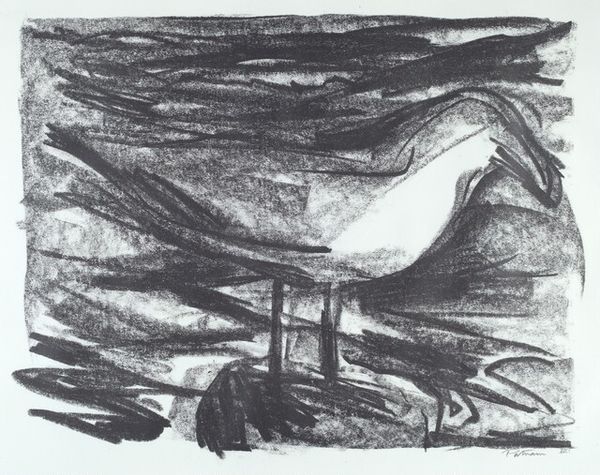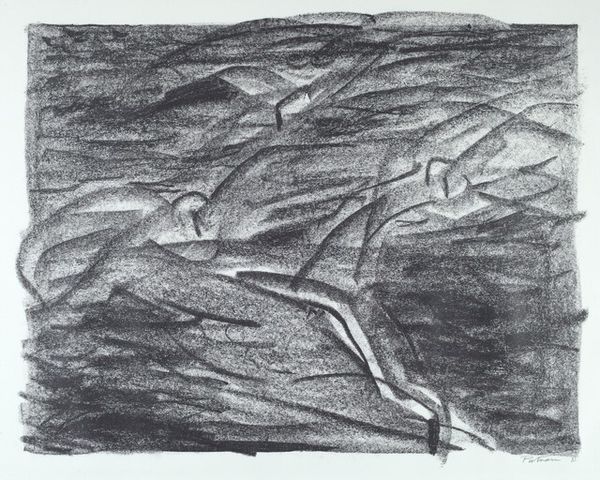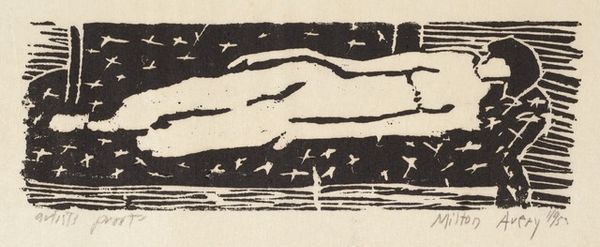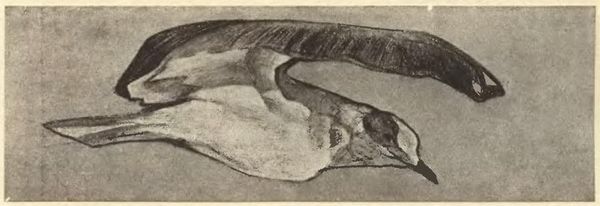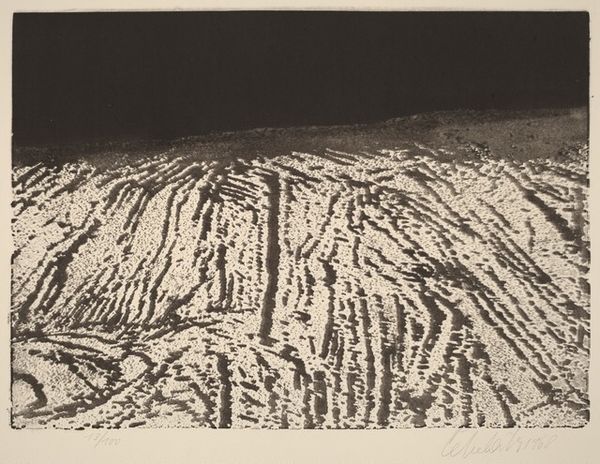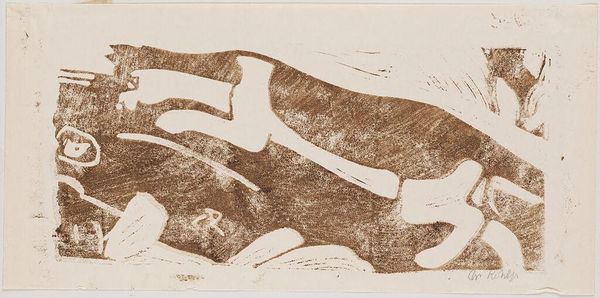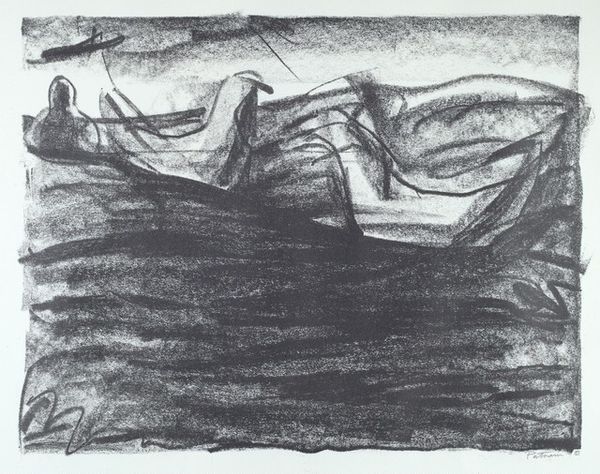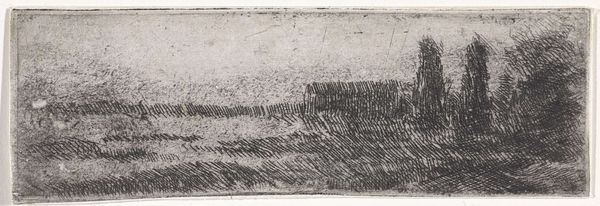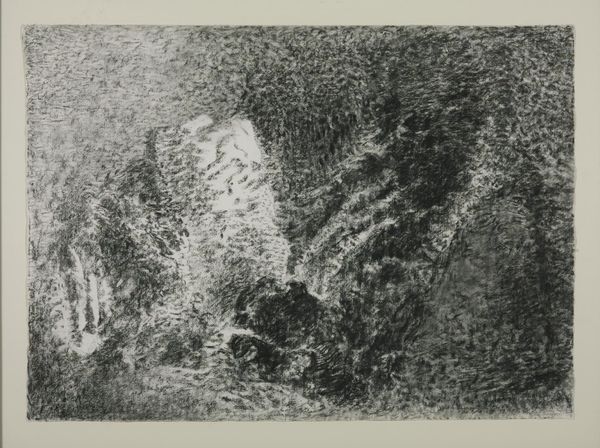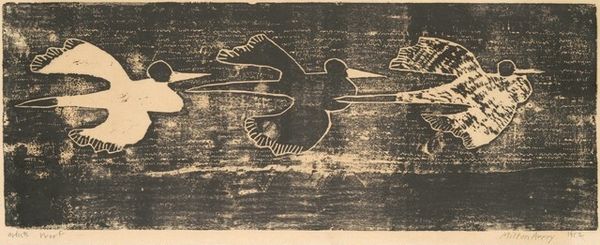
print, woodcut
#
abstract-expressionism
#
ink drawing
# print
#
landscape
#
woodcut
Dimensions: image: 13.7 x 49.5 cm (5 3/8 x 19 1/2 in.) sheet: 15.9 x 53.3 cm (6 1/4 x 21 in.)
Copyright: National Gallery of Art: CC0 1.0
Editor: This is Roy Lichtenstein's "St. George and the Dragon (II)" from around 1951, rendered as a woodcut print. It’s quite striking with its rough, almost brutal textures. How do you approach analyzing this piece? Curator: One is immediately drawn to the stark contrasts and textures inherent in the woodcut medium. Observe the tension created by the angular, interlocking shapes that compose both St. George and the dragon. Editor: It's true; there's an almost violent feel to how the shapes collide. Curator: Precisely. This tension, this formal clash, supersedes any literal narrative. Consider the interplay between the positive and negative space, how the dark, hewn areas push against the untouched paper. Does the figure seem secondary to you? Editor: Yes, in a way. The subject is fighting with the textures. I mean, the textural interplay almost overpowers the representational elements. It almost loses any connection to the traditional St. George tale. Curator: Indeed, it transcends mere illustration. The power lies in the relationships between the lines, forms, and textures themselves. The roughly hewn lines dictate a unique expressive quality. The form dictates function in this piece, the content only emerges from the stylistic interpretation. What impact does this stark formal vocabulary have? Editor: The impact is intense, like a visual assault. It feels…modern, despite referencing a classical theme. Thanks, this really gives me a completely new lens. Curator: I'm glad. Considering its form is essential. A keen understanding of formal structure allows us access to deeper interpretation of artwork.
Comments
No comments
Be the first to comment and join the conversation on the ultimate creative platform.
